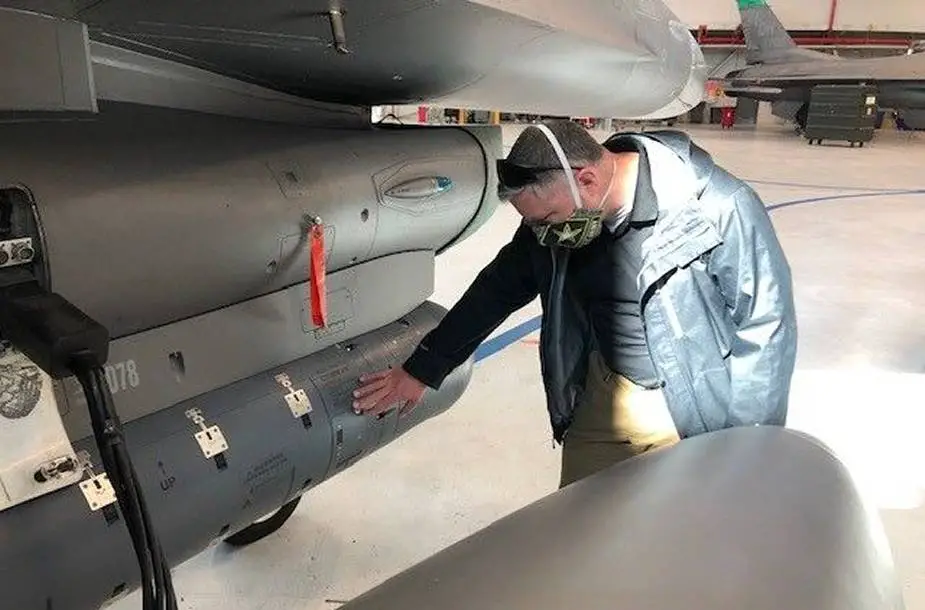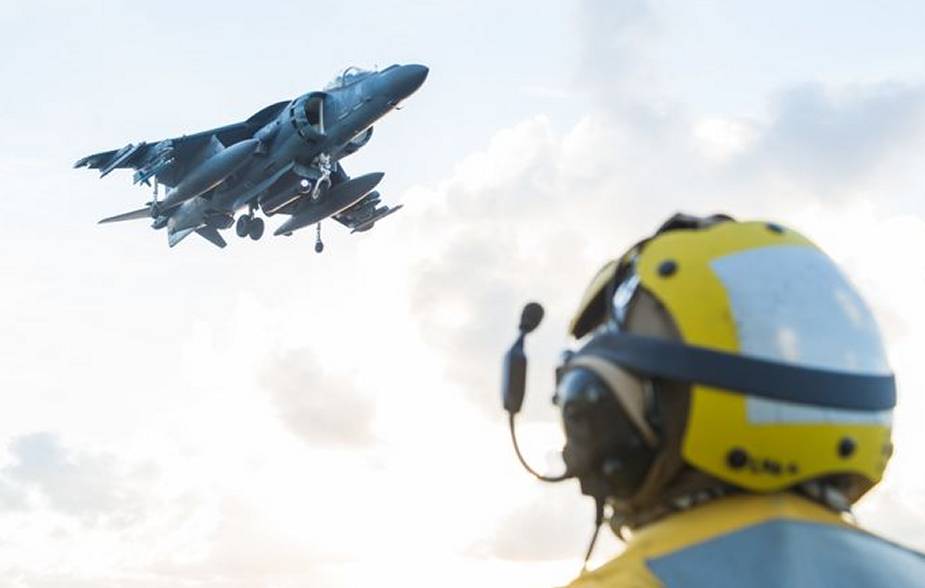Breaking news
Northrop Grumman Litening advanced targeting pods total millions of operational hours.
Litening advanced targeting pods are used by aviators worldwide to carry out targeting, surveillance, intelligence, search and rescue, and humanitarian relief missions. And they do remain ready, more than 95 percent of the time, thanks in part to the Litening field service engineering team.
Follow Air Recognition on Google News at this link

During a recent customer site visit, personal protective equipment had to be worn due to the COVID-19 pandemic. Employees at Northrop Grumman’s depot took similar measures to remain on duty and delivering pods (Picture source: Northrop Grumman)
“The secret to Litening’s high availability comes down to the dedication of the entire team, but especially the field team, and the modular design of the pod,” said Ryan Tintner, vice president, navigation, targeting and survivability, Northrop Grumman. “Our field service engineers and specialists do whatever it takes to make sure pods are mission capable, even under the most challenging circumstances.”
After more than 20 years of keeping pods ready, the team has it down to a science. The process often starts with a call from a unit to the 24-hour Litening support line. The unit may be readying for deployment or a major exercise and needs a pod health check or a software upgrade. Under the firm fixed price performance-based logistics model, the field team provides comprehensive service and support.
More than 700 Litening pods are in the U.S. government inventory and they have accumulated more than three million operational hours (a million in combat), so the team has had ample opportunity to refine its quick response preparations. However, recent calls for on-site support present a different challenge since travel to and work inside military bases is changing.
“Travel is more complicated now and software updates and troubleshooting need to be performed with social distancing in mind and while wearing personal protective equipment (PPE),” said Brian Kenny, field service engineer, Northrop Grumman.

Litening operating at sea on board a U.S Marine Corps AV-8B Harrier. The pod is mounted to a pylon under the aircraft’s centerline (Picture source: U.S. Navy)
In one instance, a National Guard squadron had just transitioned its F-16 aircraft to Litening after flying with another pod for years. The squadron was about to begin training in preparation for deployment later in the year. However, they were working with limited manpower and equipment. A planned week-long visit was condensed to three days to accommodate the schedules of available support personnel. The Litening team upgraded the software and resolved issues the operators had identified, with all pods receiving a thorough checkout in time for comprehensive mission system training.
Most customer site visits follow a similar path. Given the reliability of the pods – the mean time between removal is more than 200 hours – field service engineers spend much of their time adding capabilities to pods, and training operators and maintainers. Refresher training provided on site keeps maintainers proficient with the pod and familiar with any changes to the software or hardware.
The modular architecture of the pod is one reason for Litening’s resilience. The pod’s electronics are packaged in multiple line replaceable units (LRUs). Rather than taking a pod out of service for diagnosis and repair, maintainers can use built-in-testing to identify an LRU for investigation. The unit can be swapped out and the pod returned to service within minutes. During overseas deployments, with only limited support facilities available, this arrangement allows for the continuity of operations. It is critical at sea, where spares are limited due to scarce space below deck.
When upgrades or changes cannot be made on base or at sea, Northrop Grumman’s depot team brings advanced diagnostic and technical expertise to bear. As with employees in the field, the depot team faced challenges. Assessing customer needs, the team remained on duty and supported depot repairs every day. Employees took appropriate measures ensuring continued Litening operations and a safe, healthy work environment.

Litening can display three simultaneous views to the pilot (Picture source: Northrop Grumman)
The modular architecture also mitigates diminishing manufacturing sources and obsolescence issues, with no significant cost to the Department of Defense. Just as repairs can be accomplished with LRU swaps, new capabilities can often be integrated by changing an LRU and updating the software. Litening’s road map points to a future of significant increases in capability to meet changing warfighter needs.
“ Litening was designed for the long haul, remaining relevant and available as missions change,” said Tintner. “Upgradeability has always been a part of Litening, and it’s how we will keep supporting the fourth generation fleet throughout the life of these aircraft.”
The bottom line: Extreme weather, combat stresses and high operational tempos can’t stop Litening. The only thing tougher than the pod might be the experienced field team behind it. For members of the team, the mission is personal.
“All our field specialists are prior military and have been in the customers’ shoes,” said Todd Czubinski, field service engineer, Northrop Grumman. “So, we go the extra mile to ensure that the warfighter has what they need to get the job done in an accurate and timely manner. We take a lot of pride in what we do.”


























